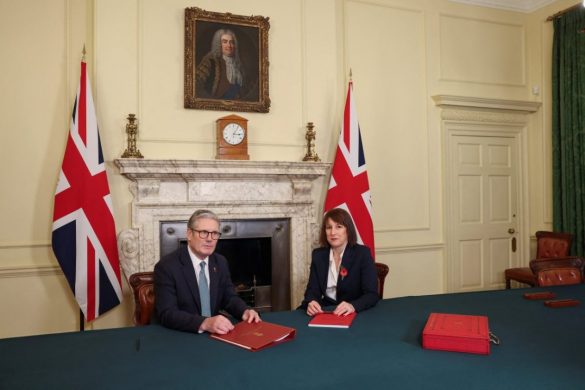Pound sterling rose to its highest level against the dollar all year, as markets digested the implications of Donald Trump’s pledge to impose reciprocal tariffs on trading partners.
Sterling was trading at $1.26 on Friday afternoon, up 0.3 per cent on the day and its highest level so far in 2025.
Cable has gained 1.9 per cent over the past week, making gains on Thursday following a positive GDP release. But sterling received further support from Trump’s tariff announcement last night.
Speaking in the White House, Trump pledged to introduce reciprocal tariffs on trading partners.
These duties will be put in place on a country-by-country basis, with the first tariffs set to be put in place from April.
“I have decided for purposes of fairness that I will charge a reciprocal tariff, meaning whenever countries charge the United States of America, we will charge them, no more, no less,” he said.
Most economists think tariffs will push up inflation, forcing the US Federal Reserve to cut rates at a slower pace. This would strengthen the dollar relative to other currencies.
But many analysts noted that Trump’s tariff plans would take time to be enforced, during which countries could try and negotiate exemptions. As a result the dollar actually weakened following the President’s comments.
Jim Reid, head of research at Deutsche Bank, noted that Trump’s press conference was “light on immediate specifics”.
“Such a country-by-country process should inevitably take some time…In the meantime, questions whether this tariff threat will be used as a negotiating tool are likely to linger,” Reid added.
Chris Turner, an FX analyst at ING, was dubious that the tariffs would ever be imposed in the manner Trump had suggested.
“Reading through the details of the basis on which reciprocal tariffs will be delivered is mind-blowing,” Turner said.
“In theory, the White House has tasked the Commerce Department and others with producing a comprehensive report on each trading partner by April. How this is physically possible remains to be seen given DOGE’s efforts to reduce the government workforce,” Turner continued.
The dollar was further weakened on Friday by weak retail sales figures, which suggest US growth is likely on a downward trajectory.
Retail sales dropped 0.9 per cent in January, a much bigger drop than expected by analysts.
“While weather effects were probably partly to blame, that weakness nonetheless suggests that GDP growth will slow to less than two per cent annualised this quarter,” Stephen Brown, deputy chief North America economist at Capital Economics said.



